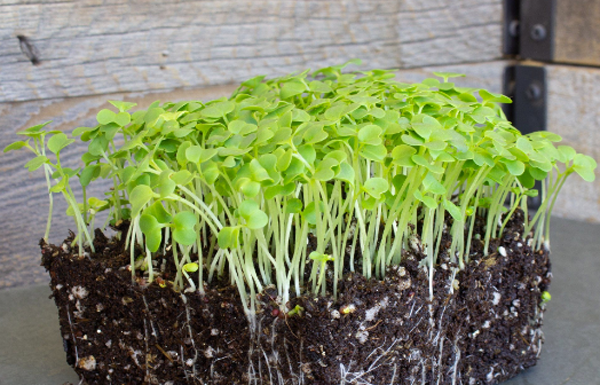
As winter comes upon us and the cleanup in the yard and gardens is wrapping up, take a few hours and clean those much appreciated yard tools of yours. Start with removing caked dirt: wash and dry the metal. If there is any rust, take the time to remove it with steel wool. If there is a sharp edge, a sharpening file can hone the working side. Then lubricate the metal to protect it during the moister months. This little effort now will allow you to grab and go in the spring.
Cold Frames and Hoop Houses
Some of us are just not ready to stop gardening. Of course, there is the cold frame. Cold frames allow cool-season crops to produce throughout the cold months. They come ready-made in different sizes. I see some being sold that are tall enough to stand in and are designed for potted plants. The weather might get too chilly for potted plants without protecting the pot and the roots as well as protecting the green growth above the soil. With that concern, I choose cold frames that are shorter and allow the plants to grow in the ground. My focus is then on keeping the plants above freezing in the cold frame. That is enough of a challenge.

Cold frame, photo courtesy Joshua McCullough
My setup has always been hay bales on the sides, glass on the top. The glass is in the form of an old door or window. If you have a jug of water or rocks within the frame, both absorb heat during the day and release it at night. Although I could not live on what I get from the plants, to me, the appeal is the novelty of growing my own fresh vegetables.
However, I do know people who are much more committed and get meals from their efforts. They grow in hoop houses usually, which are tall enough to stand in while letting the plants grow in the soil. So, yes, it is very doable.
What are cool weather crops? Think greens—lettuce, spinach, kale, collards; and then, some underground ones—beets or carrots. I want to try tomatoes. Can I do it?
Microgreens
Another food that has been intriguing me is microgreens. They are no longer a new concept, gaining popularity in the ’80s culinary scene. They are young vegetable greens (just a little further developed than sprouts) so they are tiny in size. Some have sharp flavors, and I have been told they are a powerhouse of nutrition. So I buy my little box with two thoughts: how can I use these and how hard are they to grow?
The internet is a beautiful thing. I found many suggestions on the usage of microgreens while affirming their high nutritional value. The most popular uses of microgreens are mixing into salads, layering into sandwiches, garnishing drinks, seasoning soups, juicing and adding into stir fries. I saw them referred to as vegetable confetti. That image makes me smile. The healthiest microgreens are pea, radish, sunflowers and wheatgrass. Others include cabbage, broccoli, amaranth, basil, beets, celery, cilantro, kale, lettuce, mustard, parsley, spinach and sorrel.
I offer this chart of possible microgreen families, courtesy of HealthLine:
Brassicaceae family: Cauliflower, broccoli, cabbage, watercress, radish and arugula
Asteraceae family: Lettuce, endive, chicory and radicchio
Apiaceae family: Dill, carrot, fennel and celery
Amaryllidaceae family: Garlic, onion, leek
Amaranthaceae family: Amaranth, quinoa, swiss chard, beet and spinach
Cucurbitaceae family: Melon, cucumber and squash
Microgreens do not have to take up much room, so they produce a high yield-to-space ratio. Unlike sprouts, microgreens are grown in soil and are ready to eat in 7 to 21 days. They are harvested when there are true leaves on the growth. So you need access to good light, a tray, growing medium and water. Most important is the seed. Commercial seeds are often treated with fungicide and pesticide to help the plant throughout its full life. You are eating the just-developing seedlings with microgreens. I strongly suggest certified organic or untreated seeds.
The plastic containers that strawberries are sold in at the supermarket make wonderful greenhouses for microgreens. Line the bottom with a couple of paper towels to impede the drainage of growing medium and water. Fill the container to about an inch high with moistened growing medium. It should feel like a moistened sponge. Spread the growing medium evenly throughout the container.
Sprinkle the seeds generously over the medium. Larger seeds could have been soaked overnight in warm water. Cover seeds lightly with the growing medium and then mist with a spray bottle. The seeds should never dry out but also avoid overwatering. If you don’t have a lid for your container, cover it with a plastic bag with holes which are needed for airflow. Once the seeds germinate, you can move them into a sunny windowsill or greenhouse.
Once they have germinated, the seeds need to be fed. A compost tea or a seaweed solution is ideal. When the seedlings are 1 to 3 inches tall, you may harvest by cutting with scissors. Some will come back for two to three harvests if you cut above the cotyledon leaves. Those are the first leaves out of the seed.
When you are done harvesting, the growing medium can be flipped so the bottom side is now on top and ready for planting another crop.
You can indeed have fresh greens throughout the winter.













